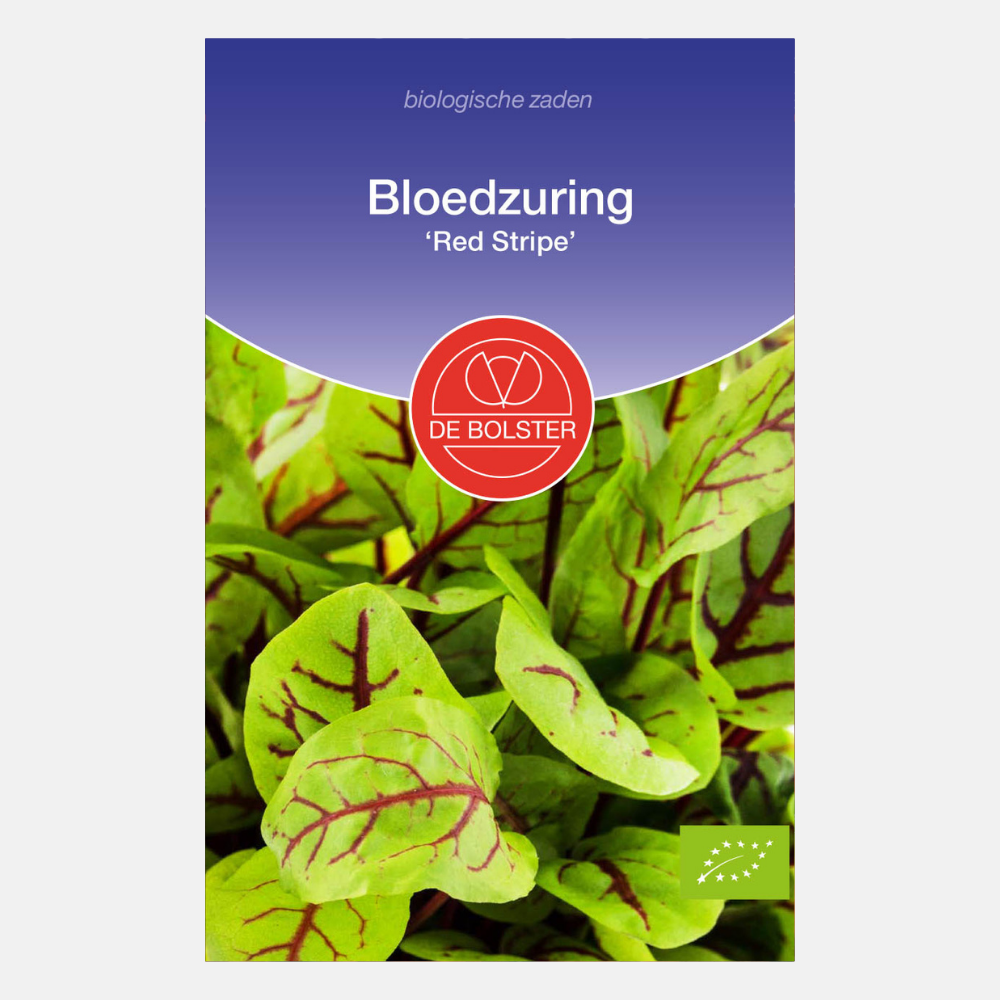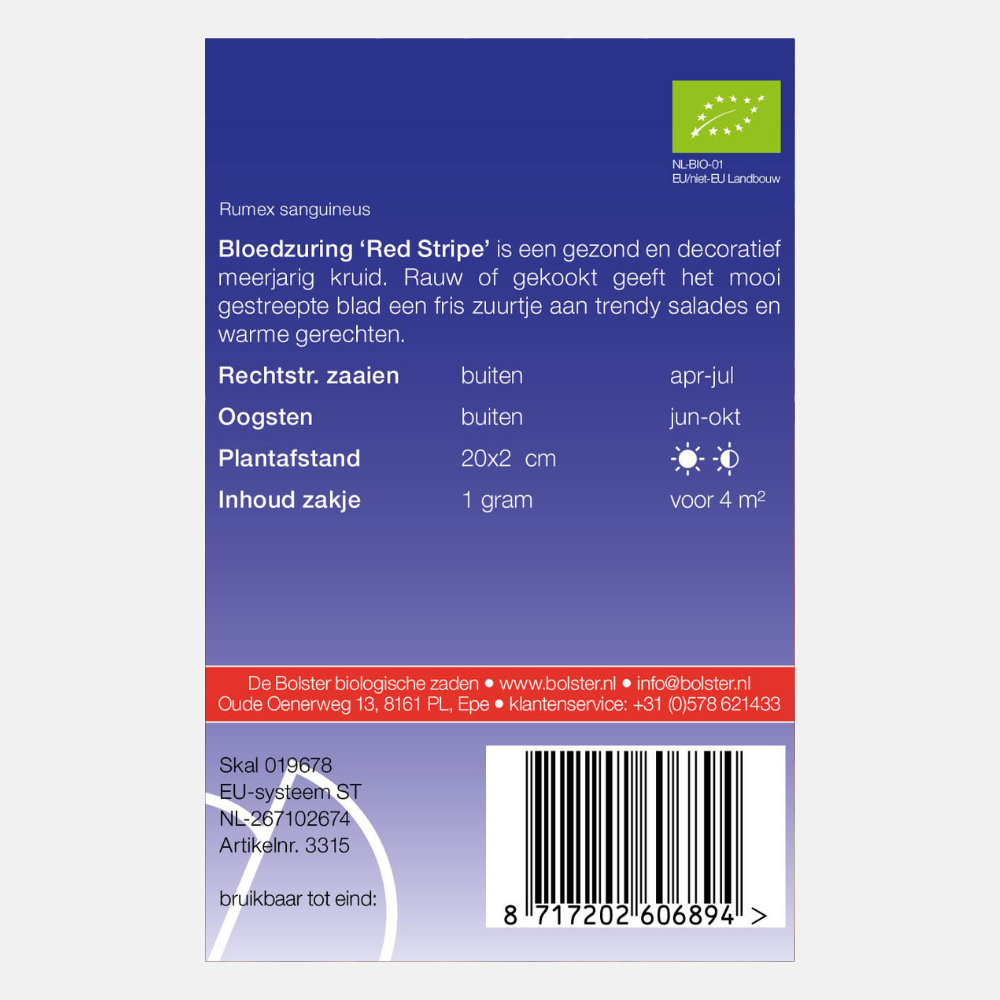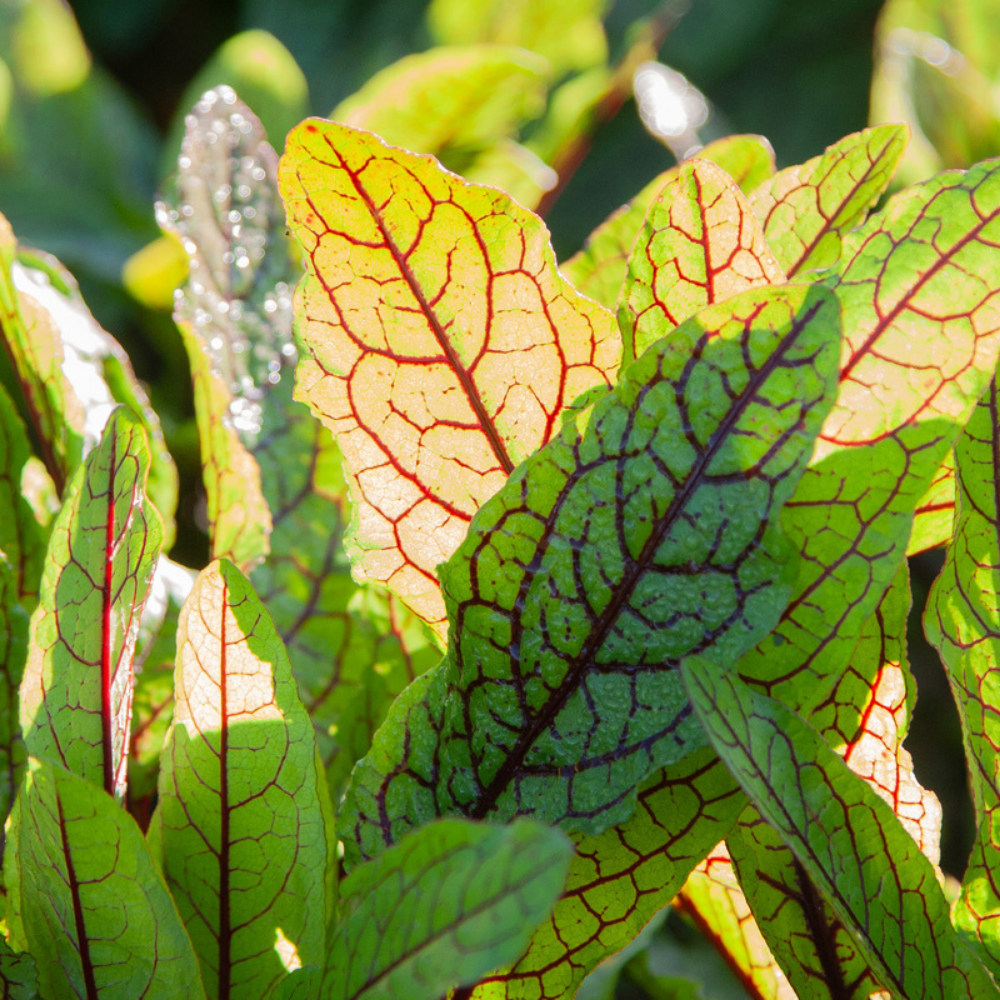Blood sorrel 'Red Stripe' BIO
The perennial herb blood sorrel 'Red Stripe' is very versatile in the kitchen. The leaf is fresh green with a red vein and stem. Suitable for all types of soil. One bag is for approximately 4m2, and the planting distance is 20x2cm.
Blood sorrel 'Red Stripe' brings a healthy variation to the contemporary kitchen. The young, fresh green leaves are beautifully round with a decorative red vein and stem. It gives trendy salads a nice juicy sour taste and can also be used as a garnish. When the leaves are fully grown, they become lance-shaped and can be used in stews, soups or as a substitute for spinach. Cut the leaves just above the ground, this stimulates the growth of new leaves. Do not harvest them too old, because then they taste considerably more sour and can even become slightly bitter.
For the harvest of young, tender and fresh green leaves, blood sorrel can best be grown as baby leaf by sowing high densities (20x2 cm). When growing baby leaf, you sow again every year. Keep in mind the slow germination and development of the plant; blood sorrel grows considerably slower than spinach sorrel. However, once the crop gets going, it becomes very productive. Blood sorrel thrives in all types of soil, but does not like extreme heat and drought. Therefore, provide sufficient water.
Blood sorrel is also suitable as a perennial. For perennial cultivation, keep a wider planting distance (20x20 cm) and let the crop grow slowly - the first harvest will then be at the end of the summer. In the second year, harvesting can already take place early in the spring. When the plant starts to flower, cut off the shoots; these often result in tough leaves. If the crop still shoots, cut the plant back to the base, so that young leaves will grow again in the autumn.
Direct sowing: Apr-Jul
Harvest: Jun-Oct
Planting distance: 20x2 cm
Soil: all types of soil
- Biologisch
- Yes
- Merk
- The Bolster
- Type en soort
- Open-pollinated variety
- Standplaats
- Sun Partial shade
- Zaaien
- April May June July
- Planttijd
- April May June July
- Oogst- en bloeitijd
- June July August September October
- Rijafstand
- 20 cm
- Plantafstand
- 2 cm
- Hoogte
- 30 cm
Blood sorrel 'Red Stripe' BIO is backordered and will ship as soon as it is back in stock.
Couldn't load pickup availability
Dispatch
Dispatch
We ship your order within 1-2 business days*. When you spend €75,- you get one free shipment. Shipping is possible from €3.95. All orders are shipped as a package with a track and trace code, so you can always follow your order. Read more about the shipping costs in our FAQ.
Delivery time pre-order
Your order will be shipped from the indicated availability date. This also applies if you combine pre-order with products that are already in stock.
*Please note: In some cases this is not the case, such as: pre-orders, chicory roots, trees and small fruit. Read more in our FAQ.
The Bolster
The Bolster
Pioneer in organic seeds
De Bolster has been the specialist in 100% organic seeds for 45 years, with a focus on sustainability and future-proof agriculture. They produce seeds of more than 330 varieties, from vegetables and flowers to green manures, at international locations and completely GMO-free. With organic breeding methods and a commitment to variety freedom, they work together with professional growers and hobby gardeners to make organic cultivation accessible to everyone. Since 2023, they have been operating as a cooperative, to increase the impact of organic farming together with customers and suppliers. Their dream? A healthy planet with 100% organic farming.
Explanation of resistances
Explanation of resistances
Our seeds are provided with different resistance codes. In this PDF you will find a clear explanation of all codes and their meaning.
Different types of seeds
Different types of seeds
What is the difference between organic, F1 hybrid, heirloom (open-pollinated), GMO, pill and conventional seeds? We explain it to you in this blog !
Saving seeds
Saving seeds
Store seeds in a cool, dry and dark place, such as a sealed box in a cupboard. Pay attention to the expiration date on the packaging and use them before that time. If the packaging has been opened, make sure it is sealed properly and check the germination capacity before use.
You can easily test the germination capacity of seeds with a germination test :
- Place a few seeds (for example 10) on a damp piece of kitchen paper.
- Fold the paper towel closed and place it in a plastic bag or place it in a sealed container.
- Place it in a warm place, such as on the windowsill.
- After a few days, check to see if the seeds have started to germinate.
Basic sowing guide
Basic sowing guide
First time sowing? No problem! Our basic sowing guide will briefly explain how to get started. Also take a look at our extensive growing guides for specific tips per plant species - super handy if you want to know exactly how to grow aubergine or garlic, for example 🌱.








